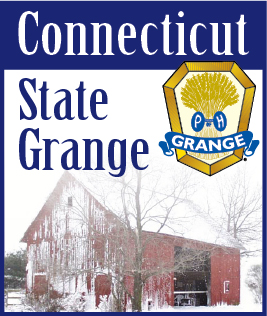| JULY 28, 2010 -- The Connecticut Department of Environmental Protection (DEP) and the Connecticut Agricultural Experiment Station (CAES) recently announced that federal agricultural officials have confirmed the presence of the Emerald Ash Borer (EAB) in nearby Saugerties, New York (about 25 miles from the CT border). EAB is an extremely destructive plant pest and it is responsible for the death and decline of over 25 million ash trees in the United States in urban and forested settings since June 2002. EAB should not be confused with the Asian Longhorned beetle, recently discovered in the Boston and Worcester areas of Massachusetts.
"This discovery is certainly a concern," said Christopher Martin, DEP Director of Forestry. "The close proximity to Connecticut definitely places our Ash trees at risk". Visual signs or symptoms of infestation include D-shaped holes, bark splits, and crown die. White ash is most prominent in the northwest corner, the very southwest corner, and east central sections of Connecticut."
"CAES is currently surveying for EAB, the Asian longhorned beetle (ALB), and other forest pests and will intensify these efforts in northwestern Connecticut", says Kirby Stafford, Vice Director of CAES and State Entomologist. "The State of Connecticut has quarantine regulations in place for EAB and ALB."
White ash comprises approximately 3% of all trees in Connecticut or about 22,408,000 trees. EAB disperses readily on its own, but like other exotic pests it can be spread when infested firewood is transported to new areas. EAB was found in a campground in Saugerties suggesting firewood was the most likely source. The next nearest infestation is over 200 miles west of Saugerties in Mifflin County, Pennsylvania.
DEP and CAES urge citizens not to transport firewood. EAB spreads quickly on its own and can be easily inadvertently transported in untreated firewood and other forest products. Buy firewood locally at or near the campground, burn all firewood at your campsite before you leave, and never bring firewood home. For those who use firewood to heat their homes, your firewood ideally should be from only a few miles away, or at least in the same county.
DEP is asking Connecticut residents to report possible EAB infestations to CAES or the U.S. Department of Agriculture, Animal and Plant Health Inspection Service, Plant Protection and Quarantine (APHIS-PPQ). Early detection, although difficult, is the best defense against further infestation. Residents suspecting they have seen EAB should report their findings to CAES at (203) 974-8474, (203) 974-8485, or CAES.StateEntomologist@ct.gov (digital photos of suspect insects are very helpful). Residents can also report sightings to APHIS via their website at http://www.aphis.usda.gov/.
Trees affected include:
· White Ash
· Black Ash
· Green Ash
Previous infestations have occurred in Illinois, Indiana, Iowa, Kentucky, Maryland, Michigan, Minnesota, Missouri, New York, Ohio, Pennsylvania, Virginia, West Virginia, Wisconsin, and Canada.
|
